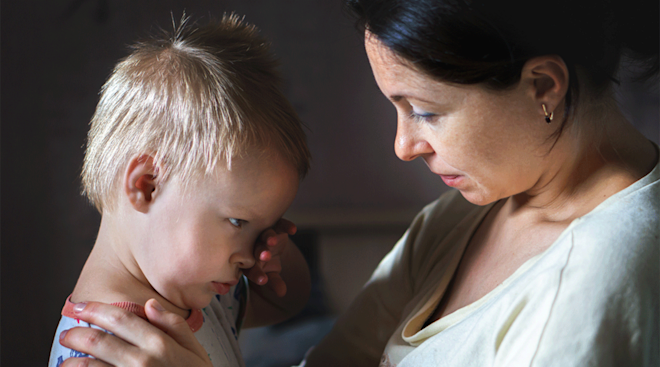Here's Why We Carry Our Babies on Our Left Side
When you pick up your baby, notice your instinct. Do you naturally cradle or swing them over to the left? If so, you’re not alone: 70 to 85 percent of parents do. And research is revealing why.
Scientists focused their research specifically on maternal behavior. This phenomenon is referred to as left-cradling bias—and it’s common among all sorts of mammals, according to a study. The findings, published in Nature Ecology and Evolution, looked at 11 species of mammals, from horses and whales to humans. Every single one showed a preference for offspring on the left—and the right side of the brain is responsible. Additional research published in Biology Letters added walruses and flying foxes to the list of animals examined, helping to prove this left-side bias is even more widespread and ingrained than previously thought.
“A left-cradling bias arises from the right hemisphere advantage for social processing, for example, visual recognition of infant facial expressions,” the authors of the first study write. “The position of an infant on the mother’s left side may optimize maternal monitoring, by directing sensory information predominantly to the mother’s right hemisphere.”
Allow us to translate. You probably learned in biology class that the right side of the brain controls the left side of the body and that the opposite holds true too. So if you’re holding baby on the left, your right hemisphere—the one responsible for processing emotion, making sense of what you see and facial recognition—is fully engaged. Your parenting muscles, in a sense, are fully flexed.
Researchers sum it up well: “We can assume that a left-side bias in mothers is related to the increased need to monitor the infant in an unsafe environment.”
Even more interesting? You’re more apt to do this during baby’s first week of life.
Please note: The Bump and the materials and information it contains are not intended to, and do not constitute, medical or other health advice or diagnosis and should not be used as such. You should always consult with a qualified physician or health professional about your specific circumstances.
Navigate forward to interact with the calendar and select a date. Press the question mark key to get the keyboard shortcuts for changing dates.




















































